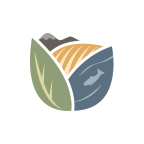Protection from Animal Damage
Native plants are an important food source for our wildlife. Young plants are especially attractive as food, but they are also more vulnerable to being damaged by animal browsing and burrowing. Tree tubes or shelters are commonly used to protect young seedlings from animal browse until they become established. You can also construct barriers around your plants using chicken wire, fishing line, or a similar material. These resources contain additional information about using and selecting tree tubes, and other options for protecting young plants from different types of animal damage.
Using Tree Tubes
Introduction to Tree Shelters – Penn State Webpage
Plant Protectors – Sound Native Plants Fact Sheet
Tree Shelter Installation and Maintenance – NRCS Fact Sheet
Installation, Maintenance, and Removal of Mesh Seedling Protector Tubes – NRCS Fact Sheet
Beyond Tree Tubes
You can build your own barriers around your plants both above and below ground to protect them from animal browse. In this case, it is best to design the barriers to protect your plants from particular animals of concern.
Preventing Conflicts with Deer – WA Dept. of Fish and Wildlife Webpage. Contains information on building deer fences.
Vole Management in Home Backyards and Gardens – WSU Extension Fact Sheet
Preventing Conflicts with Pocket Gophers – WA Dept. of Fish and Wildlife Webpage. Contains information on building underground barriers to protect plants from borrowing rodents.
Look up how to reduce conflicts with other animal species on the WA Dept. of Fish and Wildlife Living with Wildlife website.
Addressing Pest Problems in your Garden
These resources contain information about integrated pest management (or IPM), natural pest control techniques, and pesticide safety information.
Hortsense — WSU website
Northwest Center for Alternatives to Pesticides – Managing Pests and Weeds Webpage
Grow Smart Grow Safe – Thurston County website

